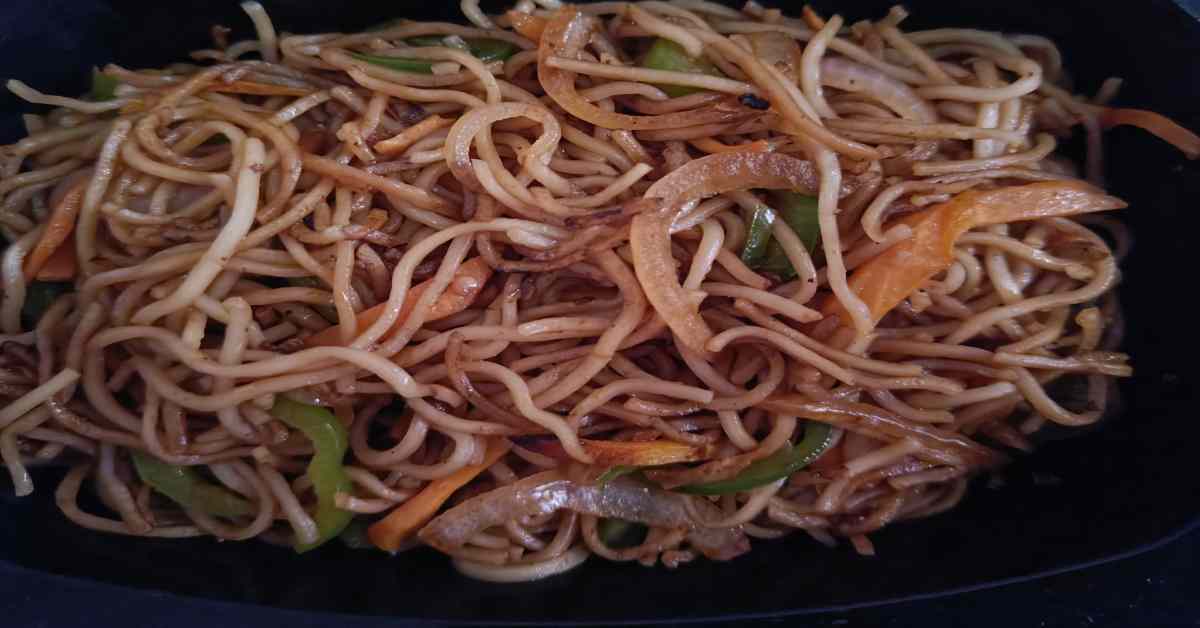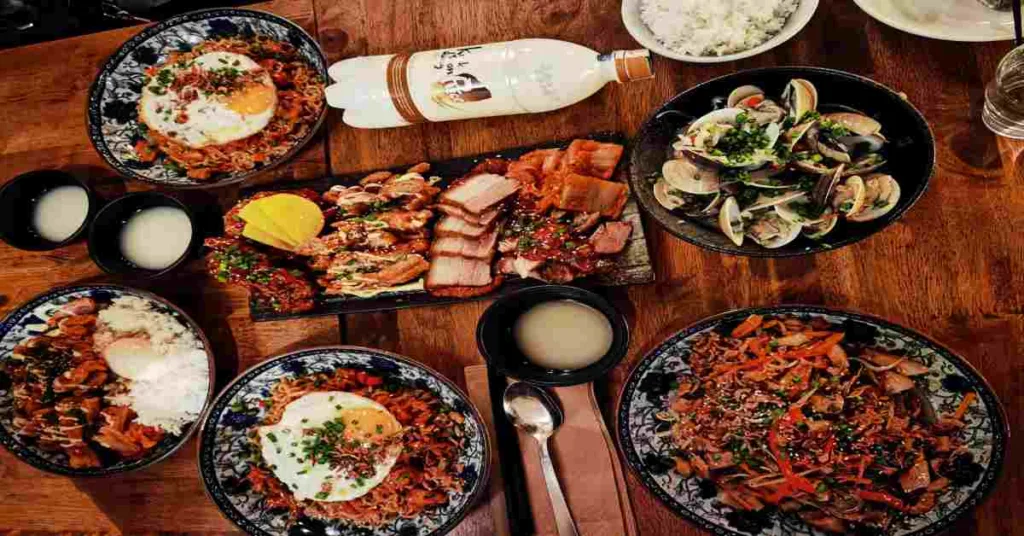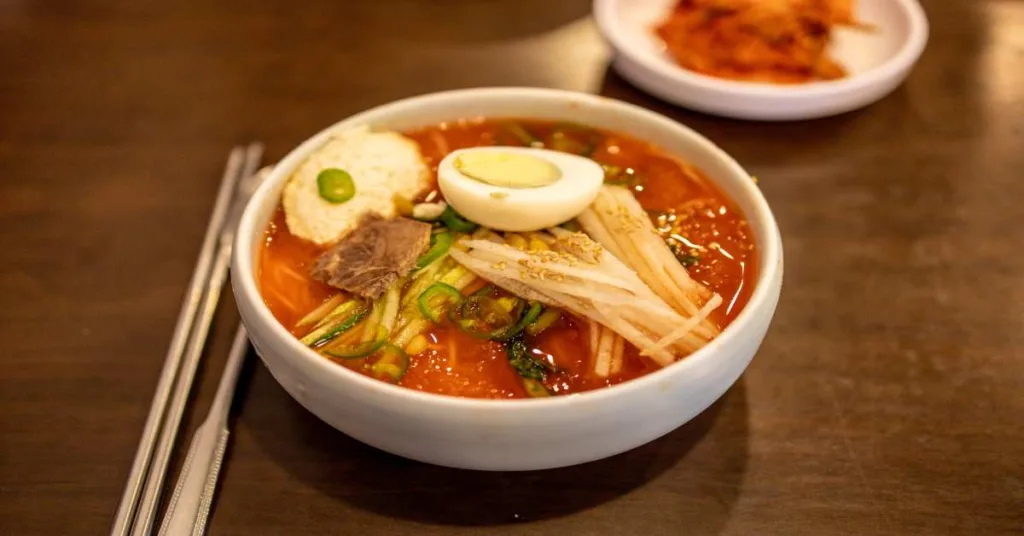Chowmein a famous Chinese food
Chowmein or Noodles are a common dish in every kitchen, and adults like them just as much as children do as a filling snack. This is a quick and simple dish that you can make at home. Simply add all your preferred vegetables and create a masterpiece of your own. Nothing compares to noodle time! A bowl of noodles is the definition of comfort food, regardless of the weather. The strings of bliss come in various shapes and can be combined with a wide variety of ingredients to create delectable meals.
Contents:
- What is Chowmein?
- Which Noodles are best to make Chowmein?
- What is the difference between Chowmein & Noodles?
- What distinguishes Chowmein from lo mein?
- Chowmein Recipe
- Vegetable chowmein
- Egg chowmein
- Chicken chowmein
- Shrimp chowmein
- What to serve with Chowmein?
- How to Store Chowmein?
- How to Re-heat Chowmein?
What is Chowmein?
Chow mein is a well-known delicious traditional Chinese meal, so when we hear the name, we immediately think of China.
The Cantonese term Chow Mein means “fried noodles.” The name itself has its meaning, “Chow” means fried whereas “Mein” means noodles. This dish consists of boiling noodles, diced chicken, beef, pork, and seafood, as well as a number of different veggies. Green peppers, carrots, celery, spring onions, and red onions are a few of the most well-liked ones. In a wok, all of the items are stir-fried together.
Chow Mein has a fascinating backstory. Chow Mein is credited to Shan Gu, a housewife from Jiangsu Province. She was preparing lunch for construction workers who were erecting a massive dam to stop the Yellow River from flooding. She discovered that food spoiled quickly and easily in the heat. Chow mein was created as a result; it can be readily reheated and consumed. Noodles are now frequently prepared by stir-frying.
She made chow mein into one of the most well-liked Chinese dishes, which everyone enjoys, especially children. The most popular method of cooking noodles is stir-frying.
One of the most well-liked cuisines in China is chow mein, and Chinese restaurants all over the world now serve it as their signature dish. Chow mein has evolved into a simple, dependable dinner that can be savored and enjoyed with stir-fried noodles and your choice of sautéed tofu, vegetables, or meat.
For a weeknight supper, it will be incredibly flavorful, fresh, and light. You can eat the dish alone or even with a delectable and fragrant Chinese curry on the side.
Which Noodles are best to make Chowmein?
Many companies solely sell specialty Chow Mein noodles under that moniker, whereas only a few do. However, eggs are present in some of these noodles. Check the ingredients before buying if you don’t consume eggs.
Otherwise, get any variety of medium-thick noodles. It can even be made using Hakka noodles. Vermicelli, which has very fine strands, should not be used to prepare chow mein.
What is the difference between Chowmein & Noodles?
- Noodles are used to make the dish chow-mein, However, they are actually a type of cuisine made from dough. Actually, the term “chow mein” comes from the combination of the words “chow,” which means “fried,” and “mein,” which means “noodles.”
- Noodles are made from a flour paste, boiled until soft, and then allowed to cool before being used in the preparation of any cuisine. On the other hand, when boiled noodles are stir-fried in a wok with a variety of sauces and finely chopped green veggies, the end result is chow mein.
- Chow mein can be made in a variety of styles, including American Chinese, Canadian Chinese, Indian Chinese, and Caribbean styles. You can cook and serve noodle dishes without adding any sauce. They can also play a significant role in salads and soups.
What distinguishes it from Lo Mein?
Many people think that lo mein and chow mein dishes use different kinds of noodles. This judgment is logical given that chow mein noodles are delightfully crunchy and lo mein noodles are silky smooth. However, what sets chow mein apart from lo mein is the preparation technique, not the type of noodle.
The confusion between chow mein and lo mein is not unique to you. It is easy to assume that they are the same dish when you encounter the term “mein.” The ingredients in both recipes are comparable, but the cooking methods for chow mein and lo mein are significantly different.
- Chow mein noodles are softened by soaking them in hot water prior to being stir-fried. The noodles and the other ingredients are thoroughly cooked throughout the stir-frying procedure.
While the pork, vegetables, and sauce are combined before the lo mein noodles, which are fully cooked beforehand.
- Although a wok is the best appliance for cooking both noodle meals, there are distinctions in how they should be cooked there. Chow mein noodles are made by swiftly stir-frying the ingredients in a small amount of oil in a very hot wok.
In lo mein, the noodles are already cooked and are mixed with the other ingredients rather than being fried.
- If there is any sauce at all, it is very light and delicate, making chow mein more of a dry noodle meal. The majority of the flavor in the saucy noodle dish lo mein comes from the thick sauce.
- Chow mein noodles often have a crunchier consistency than lo mein noodles because of how they are made.
Lo mein noodles are frequently smoother and slightly chewier since they are properly cooked before being combined with any extra ingredients and sauce. Additionally, the noodles used to prepare a lo mein meal must be substantial enough to bear the weight of additional sauce.
Recipe
Chow mein is prepared in a variety of ways with numerous variants in various locations. Here is the recipe of Chowmein.
Vegetable Chowmein
Ingredients:
Noodles, oil, water, salt, pepper, veggies like; cabbage, capsicum, onions, carrots, mushrooms or (as per the choice & availability), soy sauce, chili powder, ginger, garlic, vinegar, chili sauce.
Step1: Boil the noodles
Take a pan and add some water to it. Add a pinch of salt and oil to the water. After that, add noodles and let them boil for 3-4 min. Do not overcook the noodles.
Step2: Drain the noodles
After boiling, drain the noodles and discard the water immediately. Wash the noodles with cold water. Put some drops of oil into the noodles and keep aside.
Step3: Saute the vegetables
Now, heat some oil in a heavy-bottomed pan and stir-fry the onions, garlic, and ginger-garlic mixture until the onions are golden brown. Add carrot, mushrooms, and red and green capsicum. Relatively thorough stirring.
Add vinegar, tomato sauce, soy sauce, chili sauce, salt, and black pepper powder to the veggie combination now. Be sure to thoroughly combine. Stir vigorously after adding the noodles to ensure a well-combined mixture.
Add the prepared green-chilli vinegar mixture on top, garnish with red capsicum, and serve it hot.
TIPS:
- Take the noodles out of the boiling water for 1-2 minutes before they are entirely cooked to avoid overcooking them. Apply oil after rinsing with cold water and set away until you are ready to stir fry the vegetables. Applying oil will aid in preventing the strands of the noodles from adhering to one another.
- Chow mein should always be prepared with a large spoon.
- To keep them crispy, stir-fry the vegetables and noodles at a high temperature.
- Since chow mein is prepared over a high flame, have everything ready before you begin. Cook the noodles, chop the veggies, and combine the sauces with the vinegar and pepper in a bowl. Within a few minutes, after you begin the stir-frying process, everything will be cooked.
Egg Chowmein
- First, slice or chop vegetables like cabbage, carrots, onions, and capsicum. Next, mince the garlic and green chilies.
- Next, bring a big pot of water to a boil while adding the salt and noodles. When the noodles are done boiling, strain them in a colander and rinse them under cool water. Set apart.
- Scrambled eggs are prepared by heating oil in a kadhai, breaking some eggs into it side by side, and seasoning with salt and pepper. Don’t cook it too long.
- Now, wash the wok and reheat the oil. Add green chilies, ginger, and garlic.
- Add the carrot, cabbage, onion, and capsicum. Saute for around a minute on high heat.
- The vegetables and noodles are now combined by adding the cooked noodles.
- Mix thoroughly after adding the sauces and seasonings. Afterward, stir in the scrambled eggs.
- Egg Chowmein is ready. Serve it hot.
Chicken Chowmein
- Take a large saucepan and add 5 cups of water, 1 teaspoon of salt, and 1 tablespoon of oil. Let them boil.
- Add the noodles and cook them until they are “bite-like”—a cut should be felt through when squeezed between the hand and fingertips (that is, it should offer some resistance). If done too much, the texture won’t be noticeable on the nail, and if done too little, you’ll need to exert some pressure and the interior will be whiter.
- After draining the water, immediately submerge the noodles in cold water to stop any additional cooking and let them sit there until they are cool.
- The noodles should be coated with the remaining 1 tbsp of oil before being placed in a sieve to continue to drain. It is advisable to complete this in advance.
- On high heat, stir-fry the onions and garlic in some drops of oil until lightly browned.
- Turn the mixture a few times after adding the salt and chicken.
- Mix well before adding the soy sauce, celery, vinegar, and chili sauce.
- Add the noodles last, combine well, and serve hot.
Shrimp Noodles
- Take a pan and cook the shrimp for 1-2 min on the high flame on each side. After the shrimp has been removed from the pan, add the cabbage, red cabbage, celery, and carrots.
- Add the garlic and heat for a further 30 seconds after the spinach has cooked for 2-3 minutes until it has wilted.
- After that, add soy sauce, sweet soy sauce, oyster sauce, and other ingredients. Bring to a cook for one minute.
- Add the noodles, bean sprouts, and shrimp and mix to combine.
- Serve it hot.
What to serve with?
This tasty chow mein is packed with vegetables and doesn’t really require any additional sides. To serve with vegetarian chow mein, you can choose from any of the following options:
- Veg Manchurian
- Chilli garlic tofu
- Kung pao cauliflower
- Vegetables in hot garlic sauce
- Chinese zucchini salad
- Egg drop soup
How to Store?
After letting the noodles cool, put them in an airtight container to preserve chow mein in the fridge. The takeout containers for the noodles can be used to store them, however, they are not always airtight, so you risk having dry noodles. In the fridge, chow mein will keep for 3–4 days.
How to Re-heat?
In a nonstick frying pan or wok, heat the oil to medium-high heat. Add one tablespoon of oil and wait until it is hot (hot enough will have a little shimmer to it). Toss the noodles around the pan for three to four minutes using kitchen tongs after adding them.


